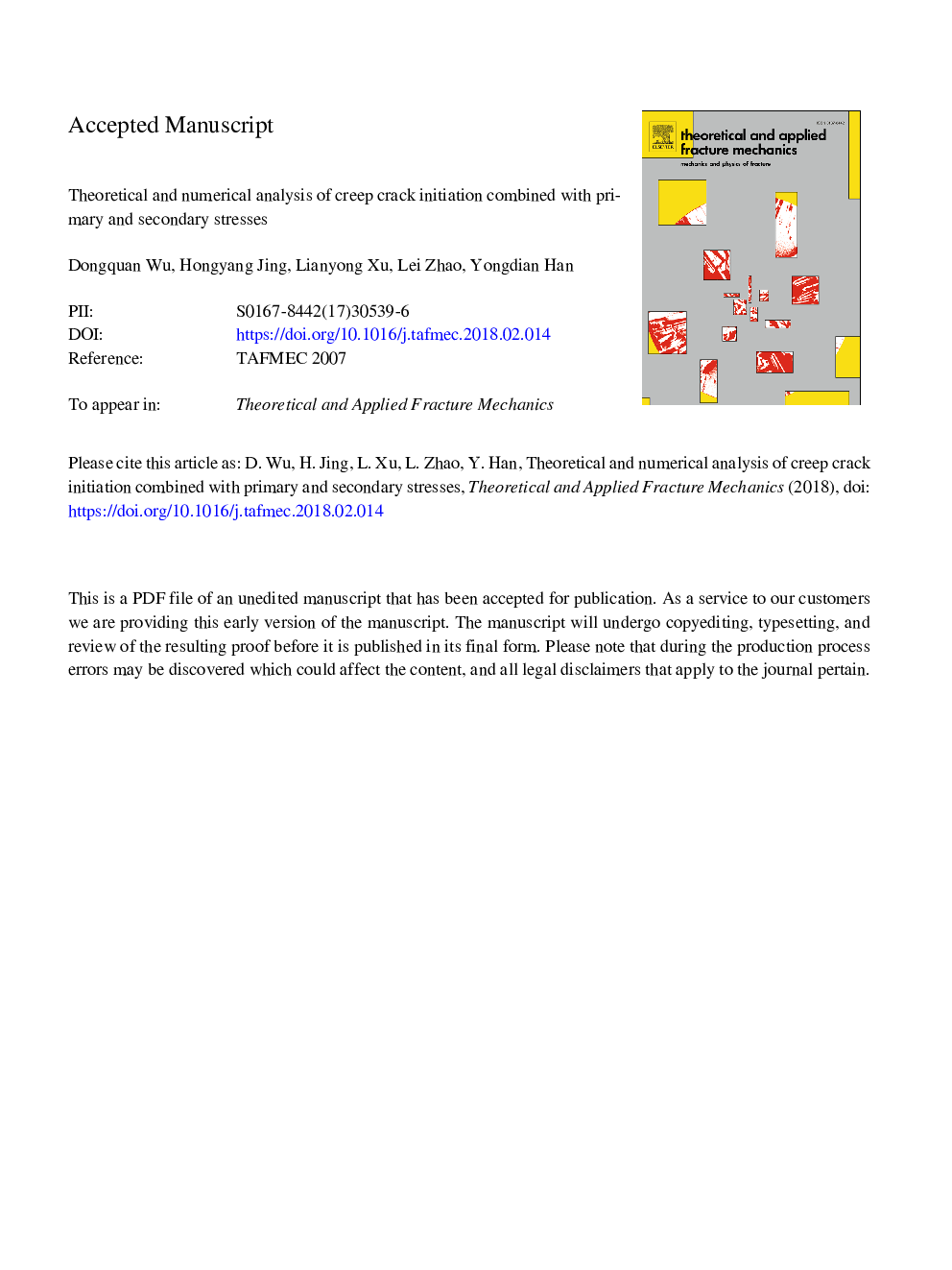| Article ID | Journal | Published Year | Pages | File Type |
|---|---|---|---|---|
| 7196153 | Theoretical and Applied Fracture Mechanics | 2018 | 44 Pages |
Abstract
In this work, the creep crack initiation time (CCI) considering the residual stress effects were investigated by numerical simulation and theoretical approaches based on the ductility exhaustion model. The redistribution of stress under the combined loading condition (i.e. the tensile residual stress generated by the pre-compressed loads and primary loads) was taken into account. The elastic follow-up factor, Z, as well as the reference stress method, was considered as part of the theoretical method. The suitability of the theoretical method to the conditions that included combined primary and secondary stresses was then investigated. Reasonable and conservative predictions of CCI time could be obtained from the theoretical solutions when the elastic follow-up factor, Z, was taken into account within the K-Riedel-Rice (K-RR) controlled model (initiation initially under the elastic K field and then under transient creep stress conditions, the Riedel-Rice (RR)) and the Hutchinson-Rice-Rosengren-Riedel-Rice (HRR-RR) controlled model (initiation initially under the elastic-plastic Hutchinson-Rice-Rosengren (HRR) field and then under RR controlled stress field) compared with finite element (FE) solutions. K-RR was more suitable when the primary stress intensity factor KIP was below 15â¯MPaâ¯m1/2, and HRR-RR was more accurate when KIP was beyond 15â¯MPaâ¯m1/2. However, RRss (initiation under the steady state creep) values were much higher than the FE solutions, but K (initiation under the elastic stress intensity factor K-controlled stress field) controlled values seriously underestimated the initiation times. HRR (initiation under the elastic-plastic HRR-controlled stress field) values underestimated the initiation time when load level KIP was less than 27â¯MPaâ¯m1/2, but slightly overestimated when KIP was larger than 27â¯MPaâ¯m1/2. The HRR-RR and HRR solutions were much close and may be a little unconservative at the high load levels (KIPâ¯>â¯27â¯MPaâ¯m1/2). The CCI time including the elastic follow-up factor Z was much more accurate than when ignoring the residual stress.
Related Topics
Physical Sciences and Engineering
Engineering
Mechanical Engineering
Authors
Dongquan Wu, Hongyang Jing, Lianyong Xu, Lei Zhao, Yongdian Han,
